ZMINA: Rebuilding - Living Way. The river in the city. The project aims to change the coexistence with the river.
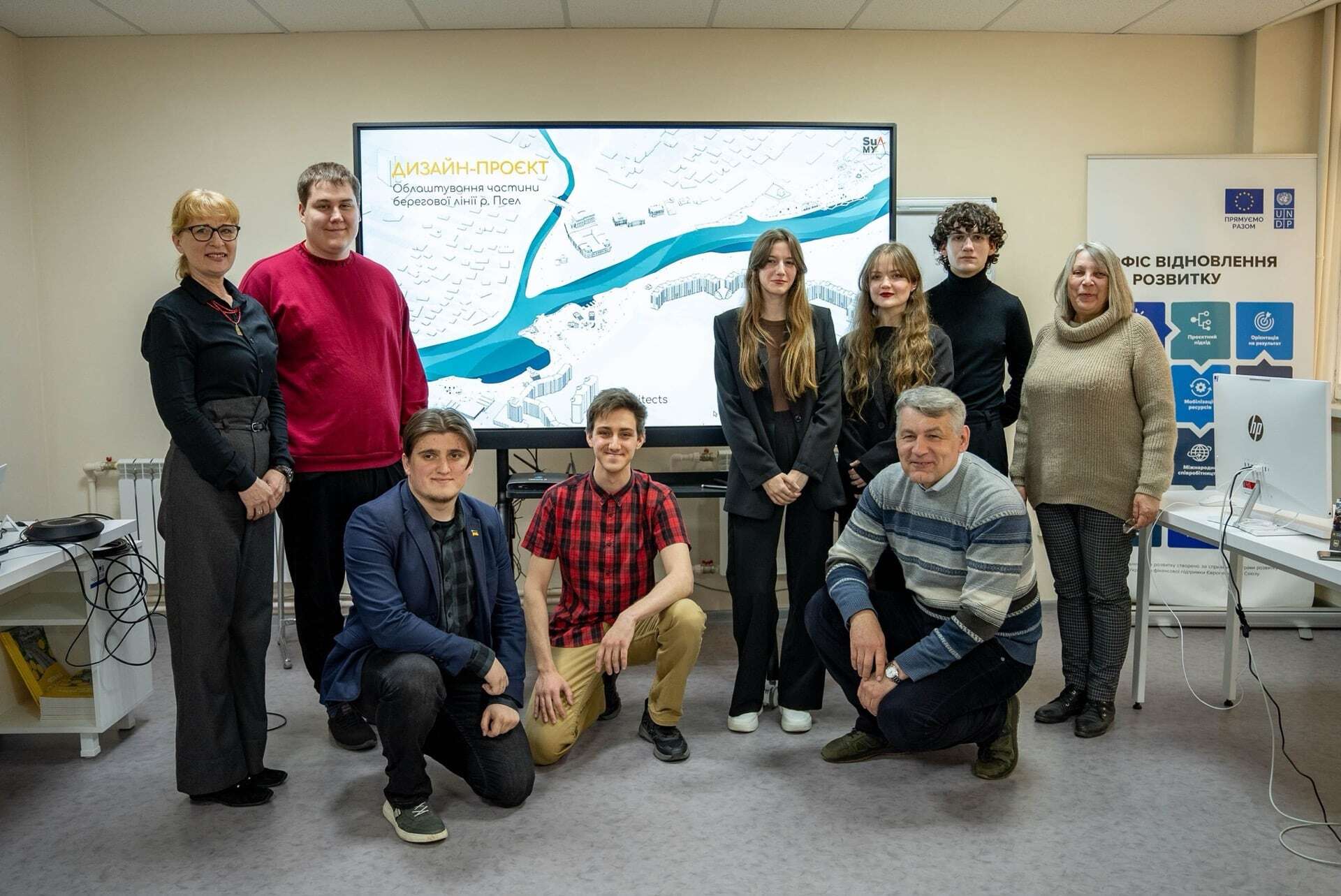
The project aims to destroy the misconception of a river in a settlement as a resource for life support only, and instead to form a sustainable understanding of the uniqueness of the water body, to recognize its integral role in the development of the city and the need to take into account and emphasize its unique features in the planning and design of urban space. The project is a series of public seminars aimed at providing an expert assessment and stimulating a broad discussion on current issues of community use of the shoreline and coastal area of the Psel River, systematizing the data obtained and creating a vision of a general strategy to bring the relationship between the city and the river to a harmonious state.
The School of Architecture and Design in Sumy is implementing this project. It was founded five years before the full-scale invasion. At that time, there was no good architectural education in Sumy, despite the existence of secondary vocational and higher architectural education. The school was actively using the latest educational practices, creating its own experimental programmes and developing. Now, despite the threats, the school finds an opportunity to continue training future architects.
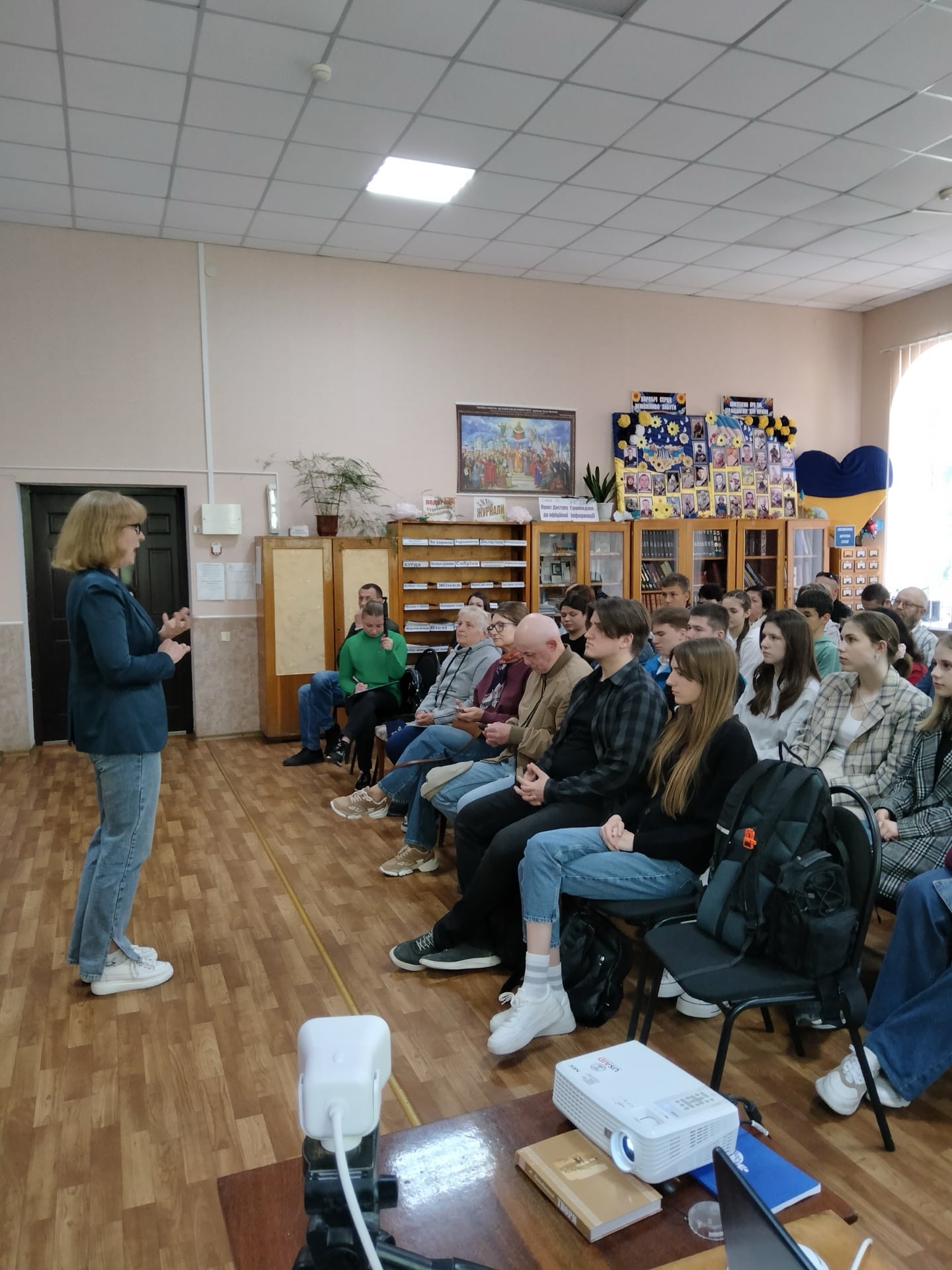
The idea for the Living Way The river in the city project came about during an excursion along the coastline of Sumy rivers led by Anna Shevchenko for students of the School of Architecture and Design. The tour showed that the area had recreational potential and, at the same time, this location was in poor condition and needed environmental restoration. Tamara Kubrakova says: “This state of the rivers is a common picture in Ukrainian cities. The hydrological conditions of each city require an individual approach based on scientific research, but this is not happening due to the established consumerist attitude of communities towards their water resources.”
This is what shaped the idea and aim of the project - to form an understanding in communities of the uniqueness of a water body, its integral role in urban development, and the need to take into account and emphasise its unique features when planning and designing urban space.
To achieve this goal, a methodological guide has been developed that provides the necessary hydrological knowledge about rivers, their impact on climate and quality of life, and describes methods of communication between communities and the authorities to achieve the solutions they need.
“The recommendations contained in the manual were tested when creating a design project for one of the locations of the Psel River shoreline within the city. A working group consisting of young architects and members of the Sumy of the Future community took part in the creation of the project. The design project developed by the working group is an example of a competent approach to the use of the city's water resources for recreational purposes,”
says Tamara.
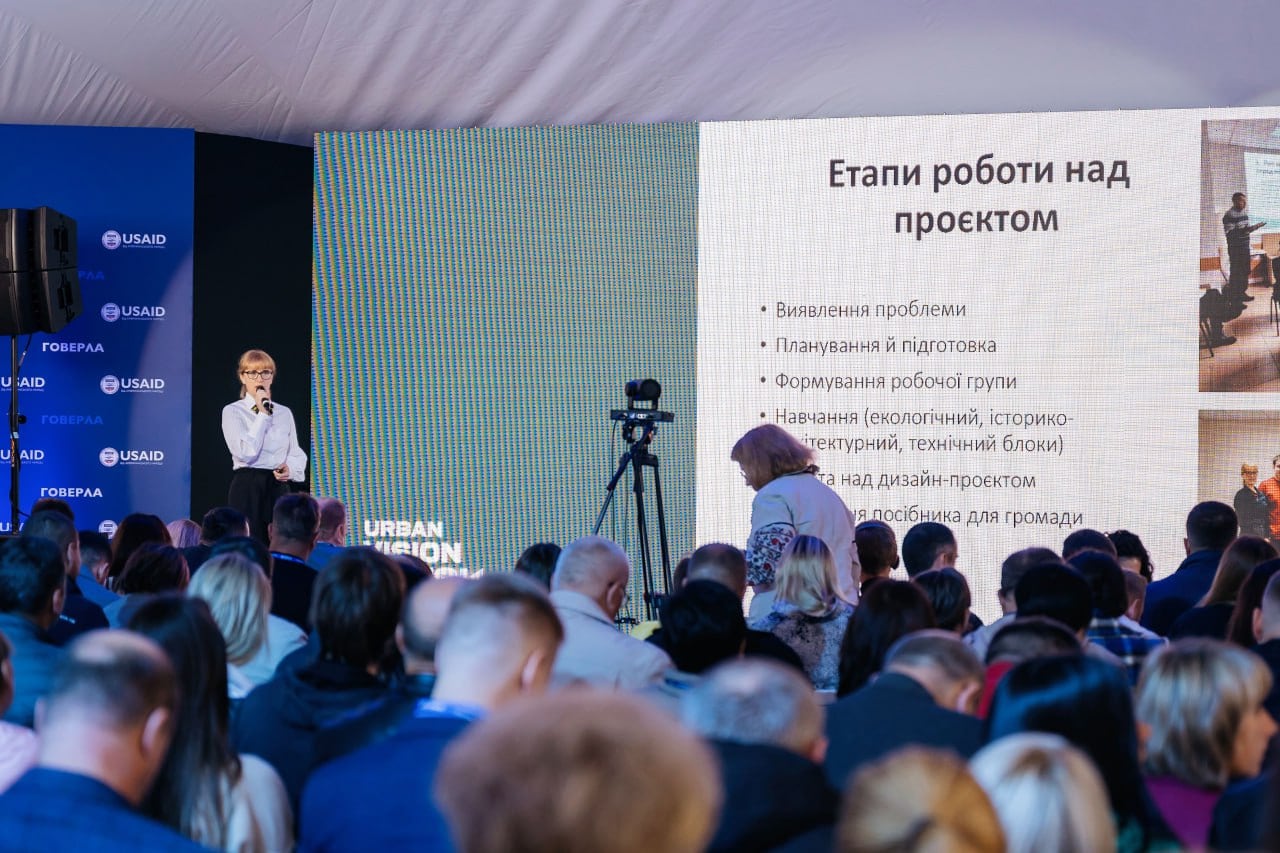
Community engagement in the project
As the project affects the local area, the community was directly involved in the project. Tamara says that the public of the Sumy territorial community was present at the public discussion of the Proposal for Amendments to the Sumy City Development Strategy until 2027. Community representatives actively discussed the proposals and gave their comments.
There was also a presentation of the results of the project Living Way The river in the city in Lokhvytsia. The event included a discussion of the project results, which were presented beyond the Sumy community. “The event was attended by representatives of the Lokhvytsia community, youth, activists, and local government representatives. The project team presented the Methodological Guide for Communities, the design project for the creation of a public space in the recreational area of the Psel River in the centre of Sumy, answered questions from those present at the event, and received positive feedback,” says Tamara.
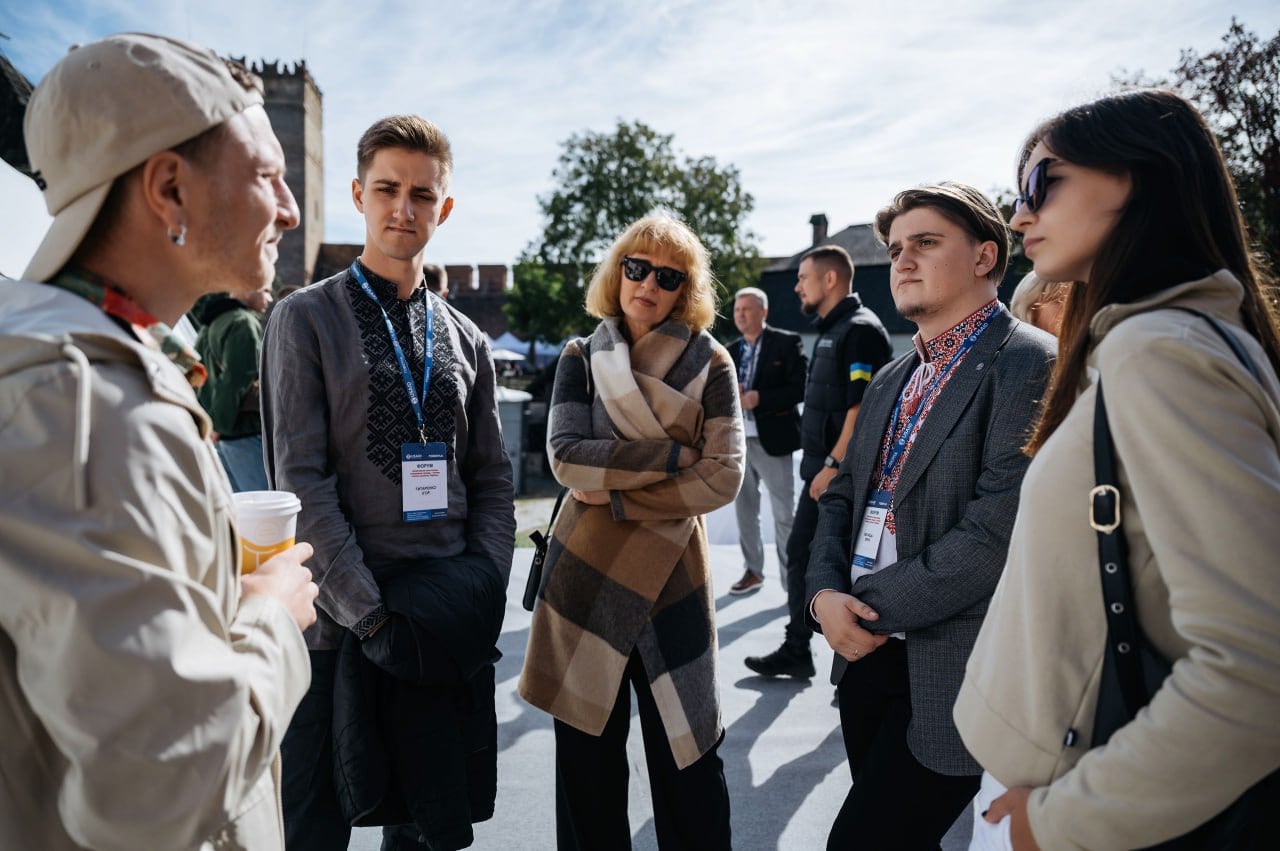
There was a presentation in The USAID Hoverla Project in Lutsk at the Spatial Planning Forum. This was an event outside the scope of ZMINA: Rebuilding project. Tamara says that this invitation by the event organiser shows how well the resonated in the Ukrainian expert community. Both the design project and the manual were also presented at this large-scale event where the presentation provoked a lively discussion and positive feedback from participants from different regions of Ukraine, including community leaders, representatives of the executive branch, scientists, architects and many others. The project was also met with positive feedback during a presentation for officials and representatives of departments of the Sumy City Council.
The presentation, however, faced some unexpected and rather unique problems. “The presentations of the project results coincided with the threat of a repeated invasion of the territory of Sumy region by Russian troops. The mood in the community was nervous, to say the least. We were disappointed by the number of community representatives who attended the public discussions. We expected a more active response. For example, the presentation in Lokhvytsia was attended by a much larger number of citizens. This does not mean that the Lokhvytsia community is more active than the Sumy community. It means that the community was dealing with more pressing issues,” Tamara says.
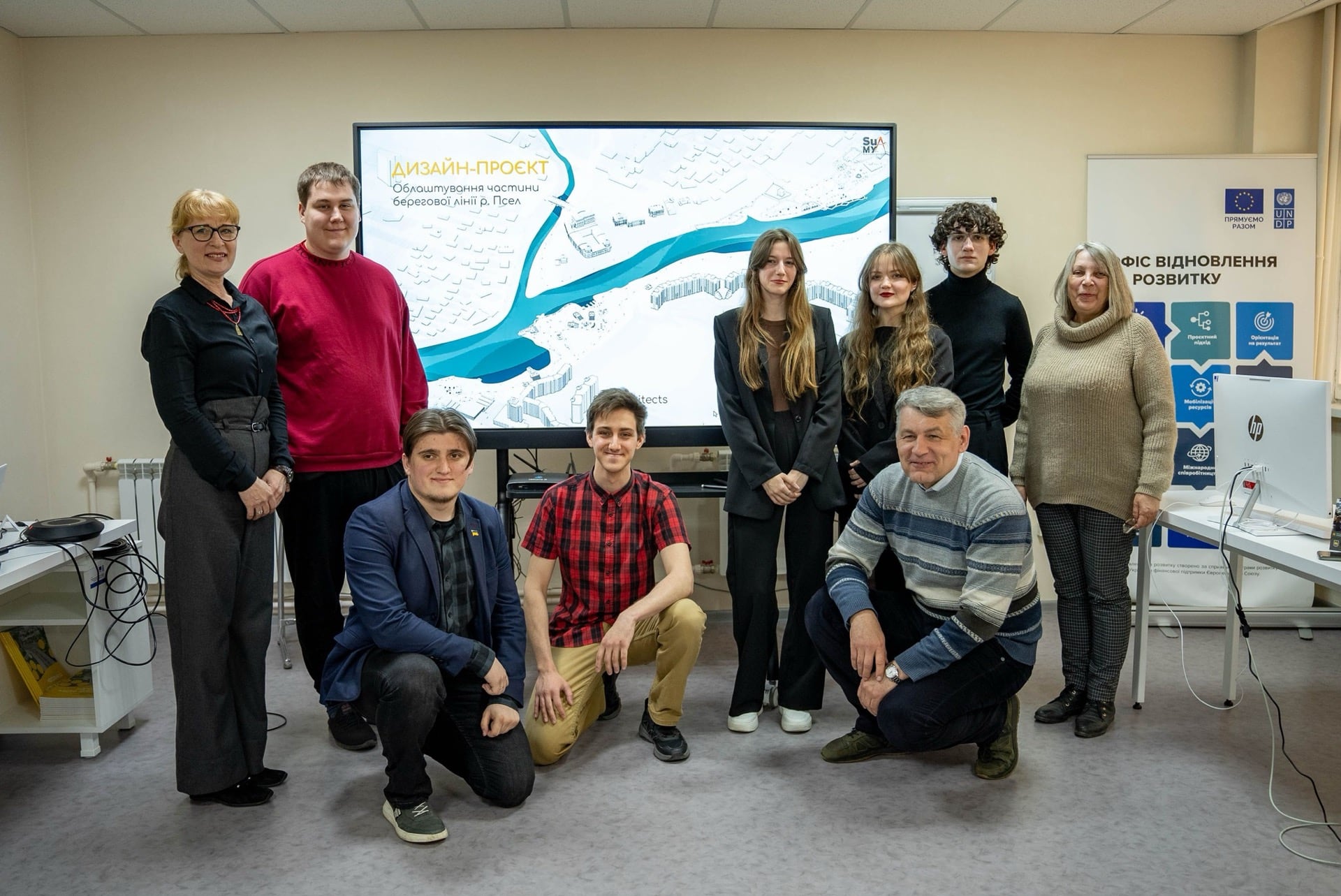
Results of the project
The final stage was planned to incorporate the results of the project, formulated in the form of specific research proposals, into an urban planning document that would make them binding. But the current zoning document is currently being reworked since it has lost its relevance and a new document - the Concept of Integrated Development of Sumy Metropolitan Area - is being developed by the think tank Cedos, the participatory planning bureau Cité, and PSEL architectural bureau in cooperation with the Sumy City Council, and will be used to formulate strategic documents such as the new Master Plan and the Sumy City Development Strategy.
“Experts and members of the team that developed the Concept of Integrated Development of Sumy Metropolitan Area have received our proposals and taken them into account in their conclusions. Currently, public events related to the framework of the Concept development have been temporarily suspended for security reasons. But the work on the document continues and we are confident that we will hear and see the results, including the implementation of our proposals,” says Tamara.
How the grant helped bring the project to life
Tamara says that the idea for the project came before the announcement of the ZMINA: Rebuilding grants. The decision to change the communities’ attitude towards their water bodies was formed thanks to the professional research activities of Hanna Shevchenko and the cooperation between her and the School of Architecture and Design. The team was looking for tools to implement this decision. “The ideology, focus, and themes of the First Wave of ZMINA: Rebuilding National Subgrants exactly matched the idea of the future project. Undoubtedly, the grant helped to implement the first, most important step towards solving this problem,” says Tamara.
During the project, they also encountered difficulties. “The difficulties are due to the position of the city of Sumy as a border city, and therefore almost on the front line. Such difficulties can only be overcome by following general safety rules,” - Tamara says.
The project has just passed its first stage, and the team has a lot of work to do. The team will try to break the cycle of stereotypes about the river and its role for the city, about how the river can cooperate with the landscape.
Author: Anna Siedykh
Illustrations:
ill. 000 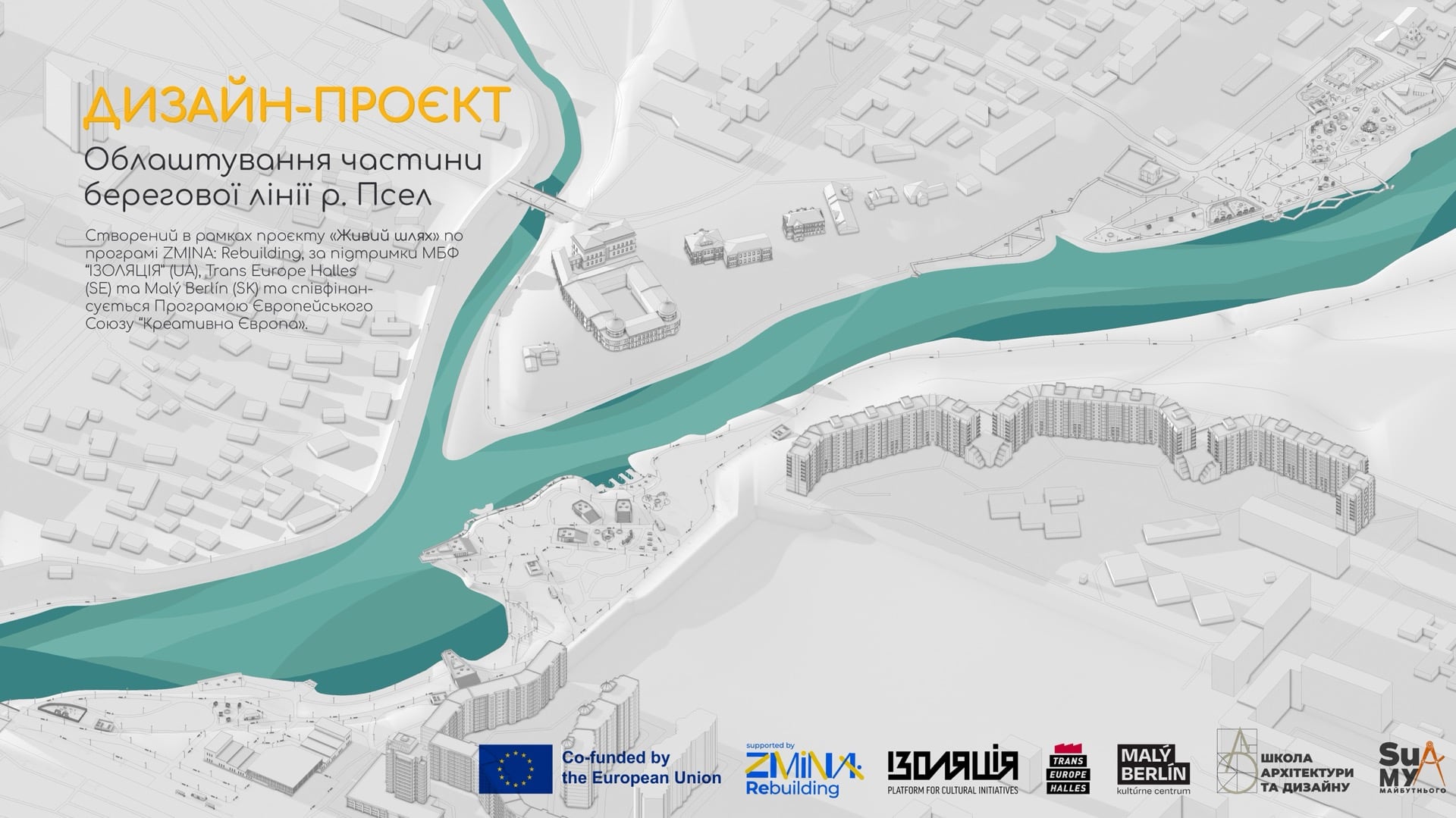
DESIGN PROJECT
Arrangement of part of the coastline of the river Psel. Created within the framework of the "Living Way" project under the ZMINA: Rebuilding program, with the support of IZOLYATSIA International Fund (UA), Trans Europe Halles (SE) ma Malý Berlín (SK) and co-financed by the Creative Europe Program of the European Union.
ill. 22
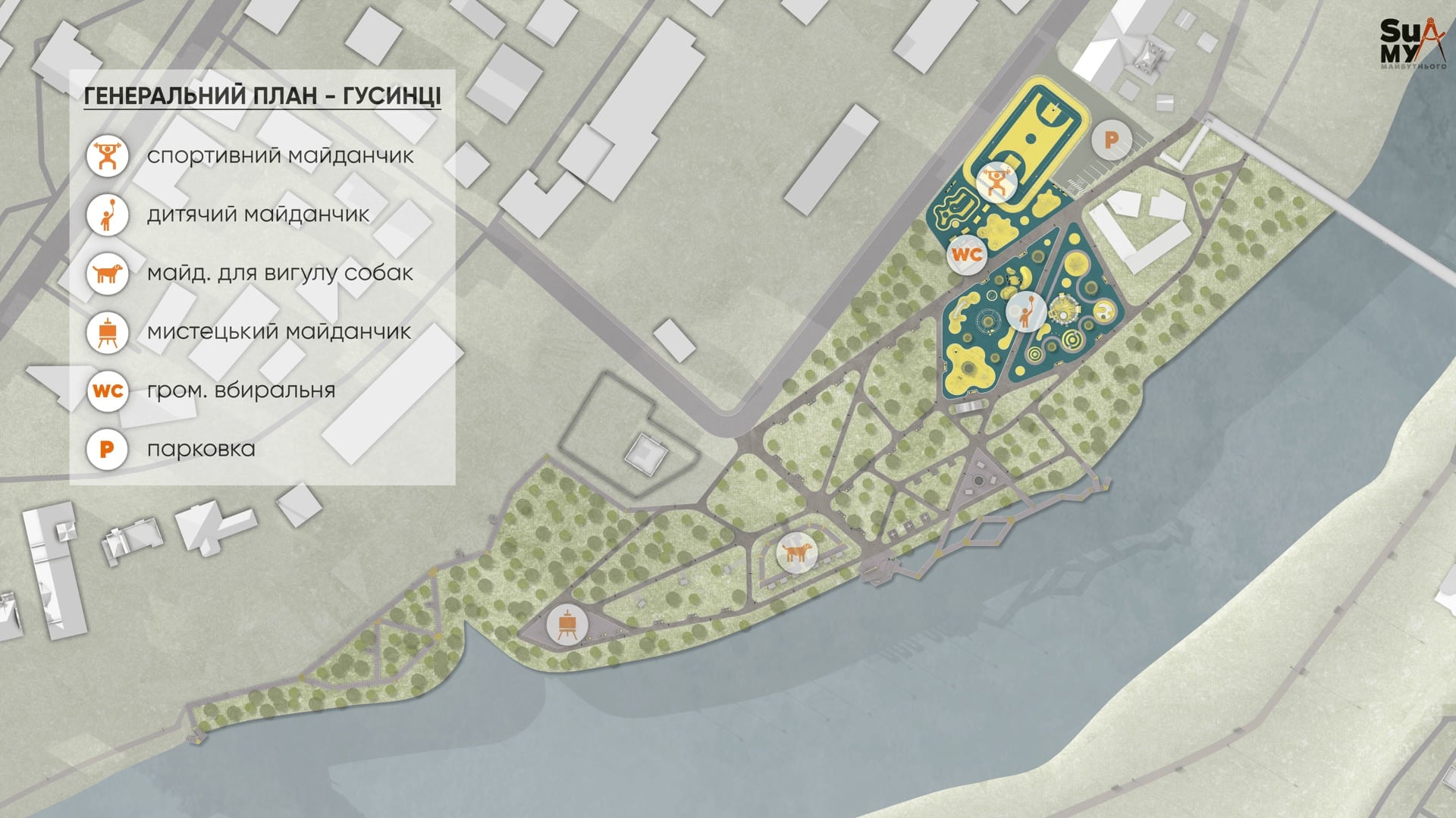
GENERAL PLAN – HUSYNTSI
- sports ground
- playground
- park for dog walking
- an art platform
- public wc
- parking
ill. 26
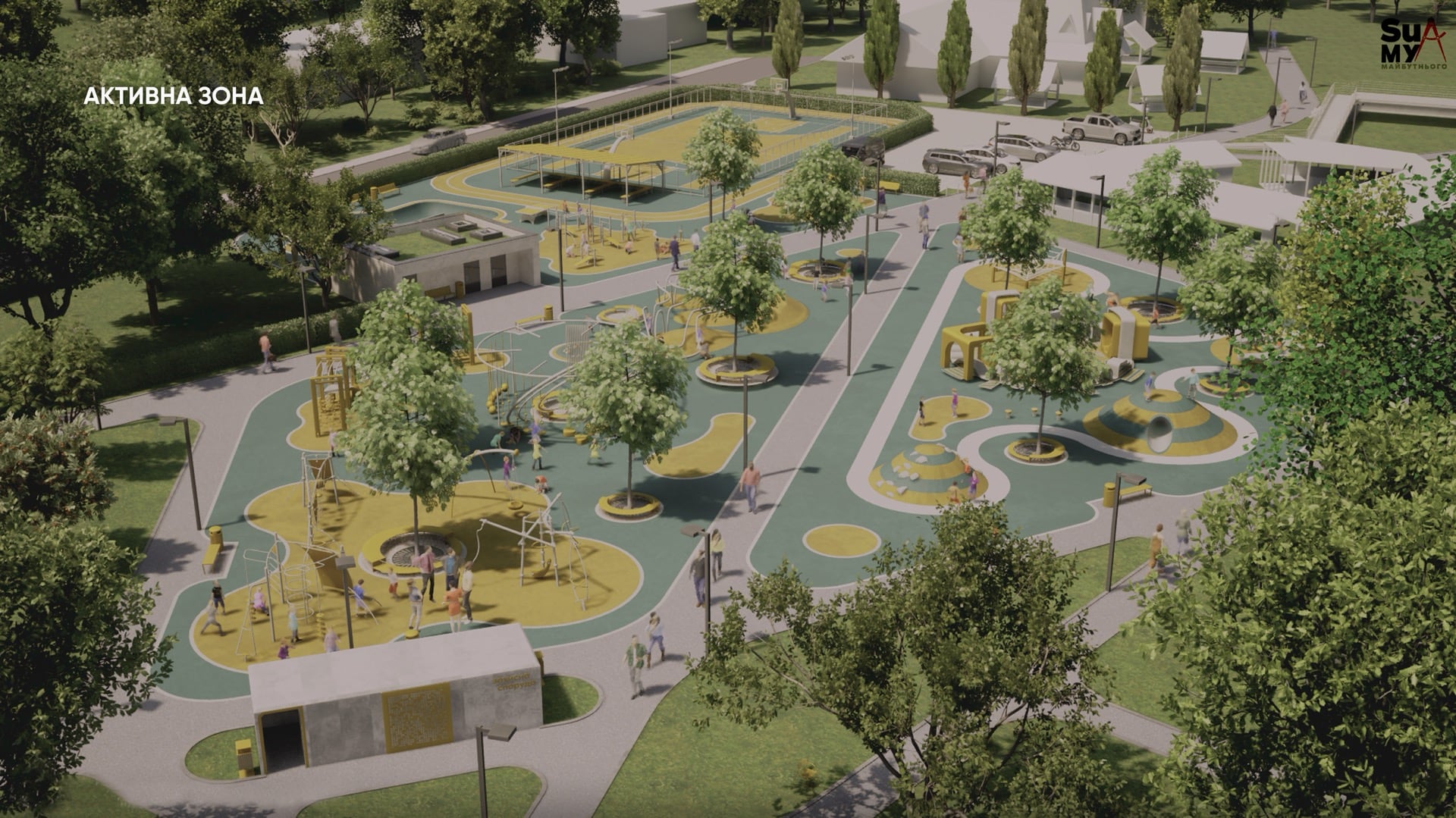
Active zone
ZMINA: Rebuilding is a project co-funded by the EU Creative Europe Programme under a dedicated call for proposals to support Ukrainian displaced people and the Ukrainian Cultural and Creative Sectors. The project is a cooperation between IZOLYATSIA (UA), Trans Europe Halles (SE) and Malý Berlín (SK).